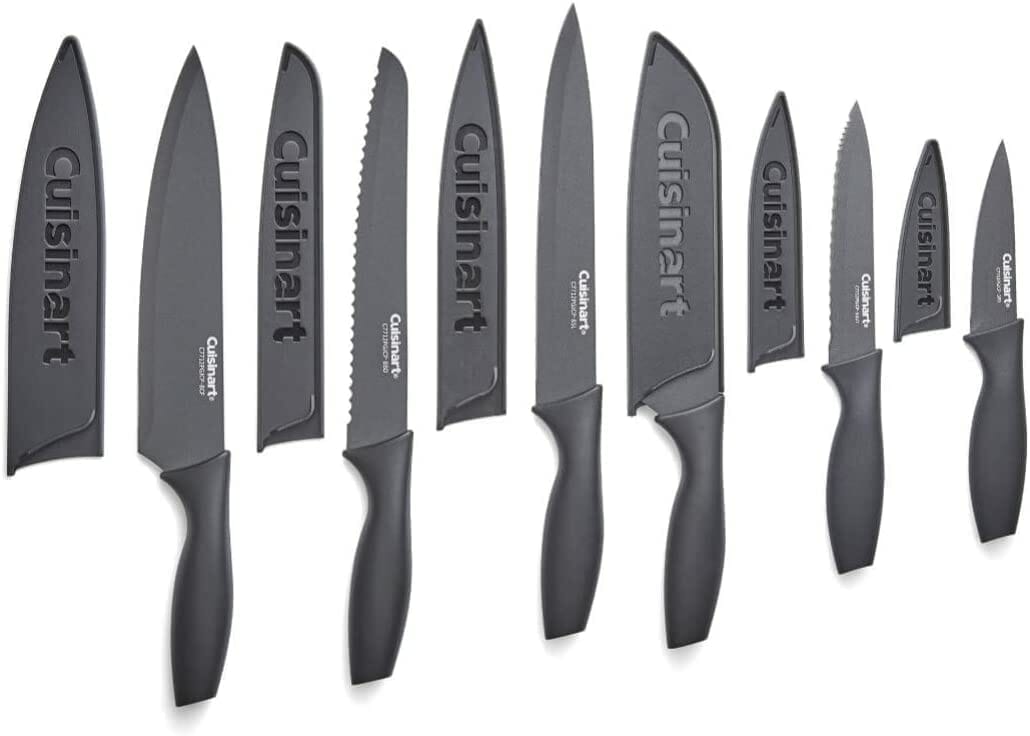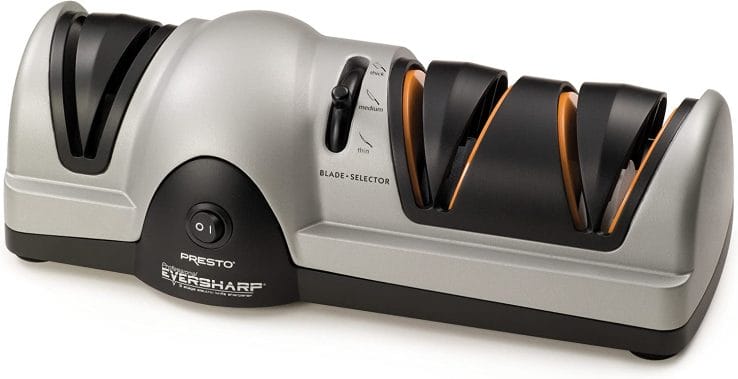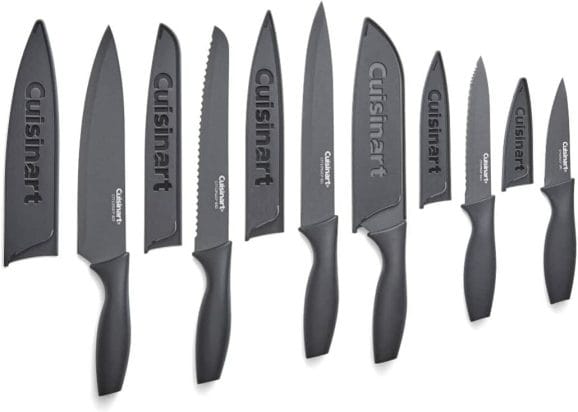Introduction
Welcome to our comprehensive guide on Maintaining Your Knife Sharpness: Tips for Long-lasting Performance. Whether you’re a professional chef or a home cook, keeping your knives sharp is essential for achieving optimal performance in the kitchen. In this article, we will provide you with valuable insights, expert advice, and practical tips to help you maintain the sharpness of your knives for long-lasting performance. Let’s dive in and discover the secrets to keeping your knives razor-sharp!
The Importance of Sharp Knives
Before we delve into the tips for maintaining knife sharpness, let’s first understand why it’s so crucial to have sharp knives in your kitchen.
Why are sharp knives essential in the kitchen?
Having sharp knives offers several benefits:
- Efficiency: Sharp knives allow you to cut through ingredients smoothly and effortlessly, saving you time and energy.
- Precision: With sharp knives, you have better control over your cuts, enabling you to achieve precise slices and dice.
- Safety: Contrary to popular belief, sharp knives are safer to use as they require less force to cut, reducing the risk of slips and accidental injuries.
- Maintaining food quality: Dull knives can crush delicate ingredients, compromising their texture and flavor. Sharp knives preserve the integrity of the food you prepare.
Now that we understand the importance of sharp knives, let’s explore the tips to ensure their longevity.
Maintaining Your Knife Sharpness: Tips for Long-lasting Performance
To keep your knives performing at their best, follow these expert-recommended tips:
Regular Honing
Proper honing is essential to maintain the sharpness of your knife’s edge. Honing realigns the blade and removes any microscopic burrs that may have formed during use.
- Invest in honing steel: A honing steel is a long, rod-shaped tool used for realigning the blade. It’s an indispensable tool in maintaining knife sharpness. Make sure to choose honing steel that matches the hardness of your knife.
- Hone before each use: Prior to using your knife, give it a few passes on the honing steel. Hold the steel vertically and maintain a 15-degree angle with the blade. Slide the knife across the steel, starting from the base to the tip, using light pressure.
- Master the technique: Proper honing technique is crucial for effective results. It’s advisable to learn the correct technique from an experienced chef or watch instructional videos online.
Regular Sharpening
While honing helps maintain the sharpness of the knife, regular sharpening is necessary to restore the blade’s edge. Sharpening removes material from the blade, creating a new, sharp edge.
- Choose the right sharpening method: There are various methods to sharpen knives, including whetstones, pull-through sharpeners, and electric sharpeners. Each method has its pros and cons, so choose the one that suits your needs and skill level.
- Follow the angle guide: Different knives have different bevel angles, so it’s crucial to sharpen at the correct angle. Consult the manufacturer’s guidelines or use an angle guide to ensure precision.
- Start with coarse grit: If your knife is significantly dull, begin with a coarse grit sharpening stone or the equivalent setting on your chosen sharpening device. Gradually progress to finer grits to achieve a polished edge.
- Maintain a consistent motion: Whether you’re using a whetstone or a pull-through sharpener, maintain a steady and consistent motion. Apply even pressure and ensure you cover the entire blade length with each stroke. Remember, consistency is key when sharpening your knives.
Proper Cutting Technique
Using the correct cutting technique not only ensures precise cuts but also helps maintain the sharpness of your knives. Here are some tips for maintaining proper cutting technique:
- Avoid excessive force: Let the sharpness of your knife do the work for you. Applying excessive force while cutting can not only damage the blade but also increase the risk of accidents.
- Use a cutting board: Always use a cutting board to protect both your knife and the surface you’re working on. Opt for cutting boards made of materials that are gentle on knife edges, such as wood or bamboo.
- Avoid hard surfaces: Refrain from cutting on hard surfaces like marble, glass, or ceramic plates, as they can quickly dull your knife. Stick to softer surfaces that won’t cause unnecessary wear and tear on the blade.
- Avoid twisting and prying: Never twist or pry with your knife. These actions can cause the blade to chip or bend, rendering it ineffective. Use appropriate tools for tasks that require twisting or prying.
Proper Storage
Proper storage plays a crucial role in maintaining the sharpness and longevity of your knives. Consider the following tips for safe and effective knife storage:
- Use a knife block or magnetic strip: Storing your knives in a designated knife block or on a magnetic strip helps protect the blades from unnecessary contact with other utensils, reducing the risk of dulling or chipping.
- Consider blade guards: If you prefer storing your knives in a drawer, consider using blade guards to prevent blades from coming into contact with other utensils and surfaces.
- Never toss knives in a drawer: Throwing knives into a drawer can cause them to collide with other objects, resulting in damage to the blade. Always place them carefully to avoid unnecessary contact.
Hand Washing and Drying
Proper cleaning and drying of your knives are essential for maintaining their sharpness. Follow these guidelines for effective knife maintenance:
- Hand wash your knives: Avoid putting your knives in the dishwasher, as the harsh detergents and high heat can damage the blades and handles. Instead, wash them by hand using mild dish soap and warm water.
- Handle with care: When washing your knives, be mindful of the blade’s sharp edge. Hold the knife by the handle and clean the blade carefully, moving from the base to the tip.
- Dry immediately: After washing, dry your knives thoroughly with a clean towel to prevent water spots or potential rusting. Leaving knives wet can also lead to handle damage over time.
- Store knives only when dry: Ensure your knives are completely dry before storing them. Moisture left on the blade can promote rust and corrosion, compromising the sharpness.
Avoid Misuse
Using your knives for unintended purposes can significantly impact their sharpness and overall performance. Follow these tips to avoid misuse:
- Avoid cutting hard or frozen foods: While some knives are designed for specific tasks like breaking down bones or cutting through frozen foods, it’s best to avoid using your everyday knives for these purposes. Excessive force on hard or frozen foods can damage the blade’s edge.
- Use the right knife for the task: Each knife is designed for a specific purpose. Ensure you’re using the appropriate knife for the task at hand. For example, use a chef’s knife for chopping and slicing, a paring knife for intricate work, and a serrated knife for bread or tomatoes.
- Avoid contact with hard surfaces: Accidental contact with hard surfaces can quickly dull the edge of your knife. Be cautious and avoid cutting directly on plates, bowls, or countertops.
- Do not use your knife as a can opener: Using your knife to open cans or pry lids can cause significant damage to the blade. Invest in proper can openers and other tools designed for these tasks.
Regular Maintenance Checks
Performing regular maintenance checks on your knives will help you catch any issues early on and ensure their long-lasting performance. Consider the following tips:
- Inspect for damage: Regularly inspect your knives for any signs of damage, such as chips, cracks, or loose handles. If you notice any issues, it’s essential to address them promptly to prevent further damage and maintain the knife’s performance.
- Tighten loose handles: If your knife’s handle feels loose, use the appropriate tools to tighten the screws. A loose handle can affect the stability of the blade, making it less safe and less effective during use.
- Professional servicing: For high-quality knives or if you’re unsure about addressing any issues yourself, consider professional servicing. Skilled knife sharpeners and technicians can assess and repair any damage to ensure your knives remain in optimal condition.
Also, read out our popular blog articles:
4 Best Knife Sharpeners for Fillet Knives
5 Best Japanese Chef Knives Under 100 in 2023
FAQs about Maintaining Knife Sharpness
-
Q: How often should I hone my knives?
- A: It’s recommended to hone your knives before each use or at least every few times you use them. Regular honing helps maintain the sharpness and prolongs the time between sharpening sessions.
-
Q: How frequently should I sharpen my knives?
- A: The frequency of sharpening depends on the usage and the type of knives you have. As a general guideline, most knives benefit from sharpening every few months or as soon as you notice a significant decrease in performance.
-
Q: Can I use a honing steel to sharpen my knives?
- A: No, honing steel is designed for honing, not sharpening. While it helps maintain the knife’s edge, it doesn’t remove material to create a new edge. For proper sharpening, use sharpening stones, or pull-through sharpeners, or seek professional sharpening services.
-
Q: How can I test if my knife is sharp?
- A: You can perform a simple paper test. Hold a sheet of paper and gently draw the knife across the edge. If the knife cuts through the paper smoothly without tearing or snagging, it’s sharp.
-
Q: Are electric sharpeners suitable for all types of knives?
- A: Electric sharpeners can be suitable for many types of knives, but it’s important to choose the right sharpener for your specific knives. Some electric sharpeners may not be suitable for certain blade materials or beveled edges. Refer to the manufacturer’s guidelines or consult with experts to ensure compatibility.
-
Q: Can I use a sharpening service to maintain my knives?
- A: Yes, professional sharpening services can be an excellent option for maintaining the sharpness of your knives. They have the expertise and specialized equipment to sharpen your knives effectively and safely.
Conclusion
Proper maintenance and care are vital for maintaining the sharpness and longevity of your knives. By following the tips and advice provided in this guide, you can ensure that your knives deliver exceptional performance in the kitchen for years to come. Remember to regularly hone, sharpen, and handle your knives with care, while also considering proper storage and cleaning practices. With these practices in place, you’ll be well-equipped to maintain the sharpness of your knives and enjoy the benefits of



